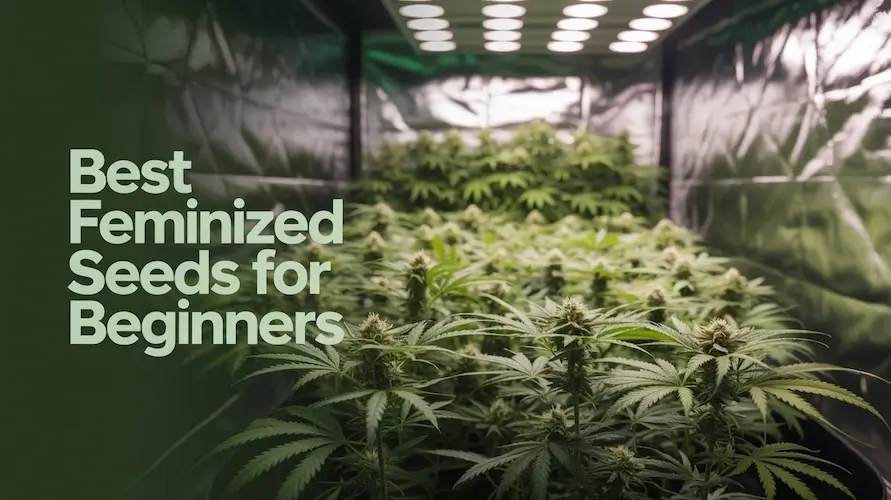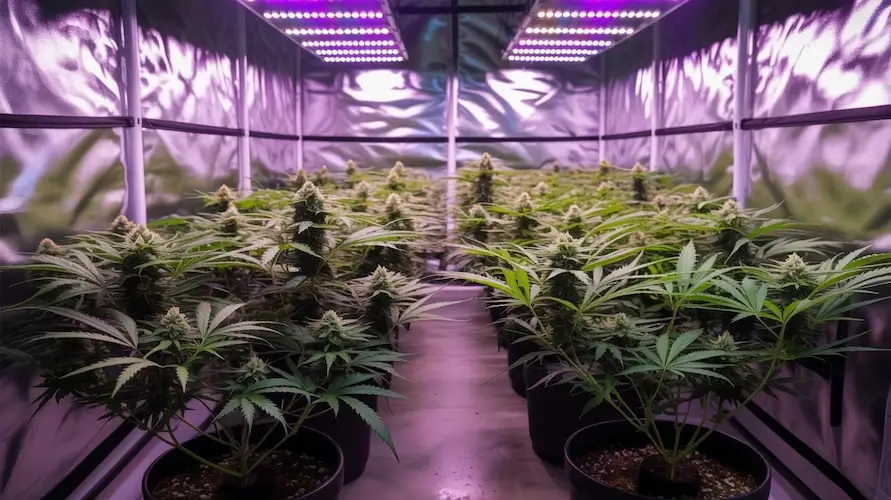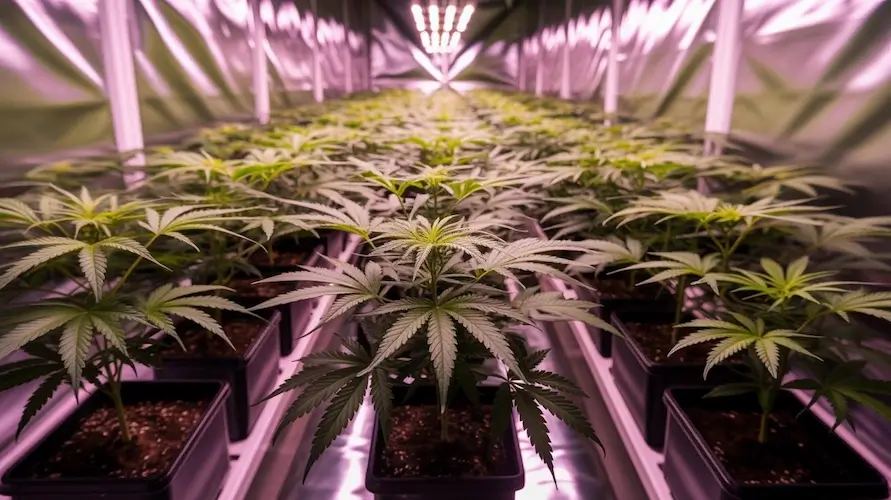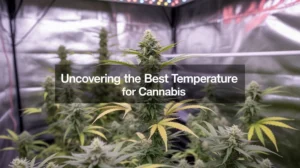Best Feminized Seeds for Beginners: Easy-To-Grow Strains

If you’re planting your first cannabis garden, feminized seeds offer the easiest, most reliable path to a successful harvest. These seeds are bred to produce female plants, which are the ones that develop the resinous, trichome-covered flowers most growers want. In this in-depth guide, you’ll learn what feminized seeds are, why they’re ideal for new growers, how to choose beginner-friendly genetics, and which strains consistently deliver simple training, resilient growth, and rewarding yields. You’ll also get a step-by-step starter plan, common pitfalls to avoid, and quick answers to frequently asked questions.
Whether you’re setting up a small indoor tent, a sunny patio planter, or a backyard bed, the best feminized seeds for beginners are the ones that match your space, climate, and goals. Use this guide to pick with confidence and set yourself up for a smooth first run.
What Are Feminized Cannabis Seeds?
Feminized seeds are produced by encouraging a female plant to make pollen, then using that pollen to fertilize another female. The resulting seeds carry only X chromosomes, so nearly all of them grow into female plants. That means you spend less time sexing plants, reduce the risk of accidental pollination, and focus your energy on dialing in healthy, vigorous growth.
A few clarifications for beginners:
-
“Feminized” refers to sex, not potency. Feminized seeds are not stronger or weaker by default; potency depends on the specific genetics and how well you grow them.
-
Stress still matters. Even feminized plants can throw a few male “nanners” if severely stressed by light leaks, extreme heat, or other environmental shocks. Good grow-room discipline prevents most issues.
Why Start With Feminized Seeds?
For a first garden, feminized seeds simplify your learning curve and protect your time, budget, and space.
-
No culling males. You don’t lose weeks of veg time on plants you might have to discard later.
-
Predictable harvests. You can plan canopy layout, training, and plant count with confidence.
-
Better use of resources. Nutrients, light, media, and square footage go toward plants that will flower.
-
Beginner-friendly training. Many feminized strains respond well to topping, low-stress training, and scrogging, helping you learn canopy management early.
How To Choose Beginner-Friendly Feminized Seeds
Finding the “best” feminized seeds depends on matching genetics to your setup. Use these criteria to narrow your choices.
Grow Environment
-
Indoor tents (2×2 to 4×4 feet): Choose compact, sturdy plants that respond well to topping and training. Avoid ultra-stretchy, long-flowering sativas at first.
-
Outdoor gardens: Look for mold resistance, pest tolerance, and flowering windows that finish before your first frost.
-
Balcony or patio: Favor short, bushy strains with a mild aroma if discretion matters.
Flowering Time
For your first run, shorter bloom windows help keep momentum. Seven to nine weeks of flowering is a comfortable target, with total seed-to-harvest time typically 12 to 16 weeks, depending on veg length.
Plant Structure
Compact, indica-leaning hybrids are usually easier to manage. Look for descriptions like “medium height,” “easy to train,” and “resistant to stress.” Avoid varieties known for excessive stretch unless you have height headroom and a plan for trellising.
Resilience
Seek out phrases such as “forgiving,” “vigorous,” “stable,” and “mold resistant.” Resilient genetics help you learn without getting punished for minor mistakes.
Flavor, Aroma, and Effects
You’ll be living with the plant for weeks, so pick terpene profiles you enjoy: piney, citrusy, fruity, gassy, earthy, or sweet. For daytime needs, consider balanced or uplifting hybrids. For evenings, lean relaxing, body-forward cultivars.
Seed Source and Reviews
Buy from reputable breeders and retailers with transparent lineage, reliable customer support, and consistent germination. Quality control matters as much as genetics.
The 10 Best Feminized Seeds for Beginners
Flowering times and growth traits can vary slightly by breeder and environment. Use these profiles as practical, beginner-focused snapshots.
1) Northern Lights (Indica)
-
Why it’s beginner-friendly: Legendary for toughness, short stature, and fast finish. Thrives in small tents and stays manageable with minimal training.
-
Flowering: About 7–8 weeks.
-
Aroma/flavor: Earthy, pine, sweet spice.
-
Tips: Keep veg short if height is limited. Responds well to topping once, then a simple low-stress spread.
2) White Widow (Balanced Hybrid)
-
Why it’s beginner-friendly: Hardy and adaptable, with strong branching that makes canopy building intuitive. Great for first-time scrogs.
-
Flowering: About 8–9 weeks.
-
Aroma/flavor: Woody, herbal, subtle citrus.
-
Tips: Moderate feeding works best. Keep humidity in check during late bloom to maximize frost.
3) Skunk #1 (Hybrid)
-
Why it’s beginner-friendly: Old-school vigor, consistent structure, and easy-to-train branching. Forgiving of slight nutrient or pH swings.
-
Flowering: About 8–9 weeks.
-
Aroma/flavor: Pungent skunk, sweet, sometimes citrus.
-
Tips: Odor control may be necessary indoors. Tuck fan leaves to open sites, and consider a light trellis.
4) Critical (Indica-Leaning)
-
Why it’s beginner-friendly: Quick, stocky, and productive with minimal fuss. A favorite for small spaces and first-time growers.
-
Flowering: About 7–8 weeks.
-
Aroma/flavor: Earthy, sweet, sometimes lemony or hashy.
-
Tips: Support colas late bloom. Keep airflow strong to protect dense buds.
5) Blue Dream (Balanced Hybrid)
-
Why it’s beginner-friendly: Big yields, flexible training, and a wide comfort zone. A classic “set and learn” cultivar for first grows.
-
Flowering: About 9–10 weeks.
-
Aroma/flavor: Blueberry, sweet, subtle haze.
-
Tips: Expect some stretch early bloom. Top, then spread branches horizontally to keep an even canopy.
6) Super Skunk (Indica-Leaning)
-
Why it’s beginner-friendly: Skunk vigor with even more resilience. Handles cooler temps and modest feeding without drama.
-
Flowering: About 7–8 weeks.
-
Aroma/flavor: Funky skunk, sweet candy, fuel.
-
Tips: Carbon filter recommended. Excellent candidate for a 2×2-foot tent with a single topping.
7) Granddaddy Purple (Indica)
-
Why it’s beginner-friendly: Compact structure, straightforward feeding, and crowd-pleasing color when temps are dialed.
-
Flowering: About 8–9 weeks.
-
Aroma/flavor: Grape, berry, earthy.
-
Tips: Gentle defoliation improves airflow. Keep night temperatures slightly cooler late bloom to bring out color.
8) AK-47 (Balanced Hybrid)
-
Why it’s beginner-friendly: Reliable structure and yield with a clear, balanced effect. Easy training and a steady appetite.
-
Flowering: About 8–9 weeks.
-
Aroma/flavor: Floral, spicy, woody, with occasional citrus.
-
Tips: Train early to widen the canopy. Avoid overfeeding late; AK often finishes clean on moderate nutrients.
9) Gorilla Glue #4 (Hybrid)
-
Why it’s beginner-friendly: Powerful resin production, stout branches, and steady vigor. Slightly hungrier but very rewarding.
-
Flowering: About 8–9 weeks.
-
Aroma/flavor: Earth, fuel, chocolate, pine.
-
Tips: Give support for chunky colas. Watch humidity; dense flowers prefer 45% or lower late bloom.
10) Cheese (Hybrid)
-
Why it’s beginner-friendly: Robust, bushy plants with predictable growth and solid yields.
-
Flowering: About 8–9 weeks.
-
Aroma/flavor: Savory, funky cheese, sweet berries.
-
Tips: Strong odor control is a must indoors. Great candidate for topping and a simple net.
Beginner Grow Plan: Your First Feminized Run in 10 Steps
-
Pick 1–3 plants, max. For a first grow, fewer plants mean better control. In a 2×2 or 3×3 tent, two to three medium cultivars is perfect.
-
Germinate right. Soak seeds in clean water for 12–18 hours, then place in a moist paper towel, or sow directly into a starter cube. Keep temps around 72–78 degrees and avoid overhandling.
-
Start in small containers. Begin in cups or 1-gallon pots with high-quality, pre-buffered media. Transplant once roots fill the container.
-
Choose a simple nutrient line. Use a two- or three-part program, follow the light feed chart, and measure pH (5.8–6.2 in soilless; 6.2–6.8 in soil).
-
Dial in your light. Keep your LED at manufacturer-recommended height and dimmer setting for seedlings, then raise intensity as plants mature. Avoid light leaks during the 12/12 flowering cycle.
-
Train early and gently. Top once above the 4th to 6th node, then tie branches outward to create a flat, even canopy. Less is more—avoid aggressive pruning in one session.
-
Control climate. Aim for 72–80 degrees by day, slightly cooler at night. Keep RH around 60–65% in veg, 45–55% in early bloom, and 40–45% in late bloom.
-
Water properly. Water to light runoff, then wait until the top inch of media is dry before watering again. Overwatering is the most common beginner mistake.
-
Support in bloom. Install a simple trellis or plant stakes as colas gain weight. Increase airflow to prevent mold.
-
Harvest with patience. Use a jeweler’s loupe to inspect trichomes. Many beginners harvest early; wait for mostly cloudy trichomes with a few amber for balanced effects.
Common Mistakes To Avoid
-
Overwatering. Roots need oxygen. If pots feel heavy, wait.
-
Chasing bottled fixes. Resist the urge to add multiple “boosters.” Strong fundamentals beat additives.
-
Ignoring pH. Out-of-range pH locks out nutrients, creating false “deficiency” symptoms.
-
Overtraining right before bloom. Heavy pruning immediately before or after the flip slows growth.
-
Poor airflow. Stagnant air invites pests and mold. Use fans to gently move leaves.
-
Light leaks. Even small leaks during dark periods can disrupt flowering and cause stress.
-
Skipping notes. Track dates, feed strength, and observations. Your second run will improve dramatically with a basic grow log.
Feminized Seeds vs. Autoflower Seeds (For Beginners)
Autoflower seeds bloom on a timer rather than a light schedule, and many finish faster. They can be a great choice for small spaces or fast outdoor runs. That said, feminized photoperiod seeds are often the better choice for your first grow because they let you:
-
Control veg time. You decide when to flip to flower, which helps correct early mistakes and fill your canopy.
-
Practice training. Topping and scrogging are easier with photoperiods.
-
Learn environmental dialing. Photoperiods are forgiving as you fine-tune light, feed, and climate.
Once you’ve completed a photoperiod cycle, autos become much easier to manage successfully.
Quick Buying Checklist for Beginners
-
A reliable, beginner-friendly strain (see the top 10 list).
-
Feminized seeds from a trusted seller with clear lineage and support.
-
Clean starter cubes or high-quality seedling mix.
-
A calibrated pH pen and simple nutrient line.
-
Proper odor control if growing indoors.
-
A basic loupe for harvest timing, and a notebook for your grow log.
FAQs: Feminized Seeds for Beginners
Do feminized seeds ever produce male parts?
Rarely, but severe stress can trigger a few male flowers. Maintain stable light cycles, avoid high heat, and correct environmental issues promptly. Healthy, stable genetics are your best insurance.
How many feminized seeds should I buy for a first grow?
Two to five seeds is a practical start for a small tent. Pop two or three, save a couple as backup, and keep your first canopy manageable.
How long should I veg feminized plants?
Most beginners veg 3–6 weeks, depending on pot size, training, and target plant height. Remember that many strains stretch 1.5–2× in early bloom.
Are feminized seeds less potent than regular seeds?
No. Potency depends on genetics, plant health, and harvest timing, not whether the seed was feminized.
Can I take clones from a feminized plant?
Yes. Feminized plants can be cloned like any other female. Clones inherit the same photoperiod and flower traits.
Indoor or outdoor for a first run?
Indoors offers more control and privacy, which shortens the learning curve. Outdoors can be easier if you have good sun exposure, favorable weather, and local regulations allow it.
Putting It All Together: A Simple First-Grow Template
-
Space: 3×3-foot tent with a quality full-spectrum LED.
-
Plants: Two feminized plants from the list above (for example, Northern Lights and White Widow).
-
Media: Buffered coco or a quality soil blend.
-
Nutrients: A basic two- or three-part line, dosed lightly in early veg.
-
Training: Top once, then low-stress training to spread branches.
-
Environment: 75–78 degrees, 60% RH in veg; 72–75 degrees, 45–50% RH in bloom.
-
Flip: At 3–4 weeks or when your canopy is about half your final target height.
-
Harvest: Around week 8–9 of bloom for these examples, with trichomes mostly cloudy.
Follow this template, keep notes, and focus on consistency. Your second run will be smoother, faster, and higher yielding.
Where To Buy the Best Feminized Seeds for Beginners
The safest route is a reputable seed bank with proven breeders, reliable customer support, and fast fulfillment. At Seeds Here Now, you’ll find a wide selection of feminized seeds for beginners, from classics like Northern Lights, White Widow, and Skunk lines, to modern crowd-pleasers like Blue Dream, Original Glue, and Granddaddy Purple—plus detailed strain pages, clear breeder info, and responsive support. Shop feminized seeds that match your space, taste, and timeline, and start your first harvest on the right foot.
Key Takeaways
-
Feminized seeds remove guesswork, reduce wasted space, and simplify planning.
-
Choose fast-flowering, compact, resilient genetics for your first cycle.
-
Start small, master the basics, and document everything.
-
The best feminized seeds for beginners are the ones that fit your environment, goals, and schedule.
With the right genetics and a steady plan, your first run can be smooth, instructive, and genuinely fun. When you’re ready, explore the best feminized seeds for beginners at Seeds Here Now, pick a classic from this list, and grow your confidence—one healthy plant at a time.
Suggested Articles
;)
;)
;)






 18 Dec 2025
18 Dec 2025  5 min read
5 min read


 April 15, 2024
April 15, 2024 


RESPONSES (0)
No responses yet. Be the first to respond!